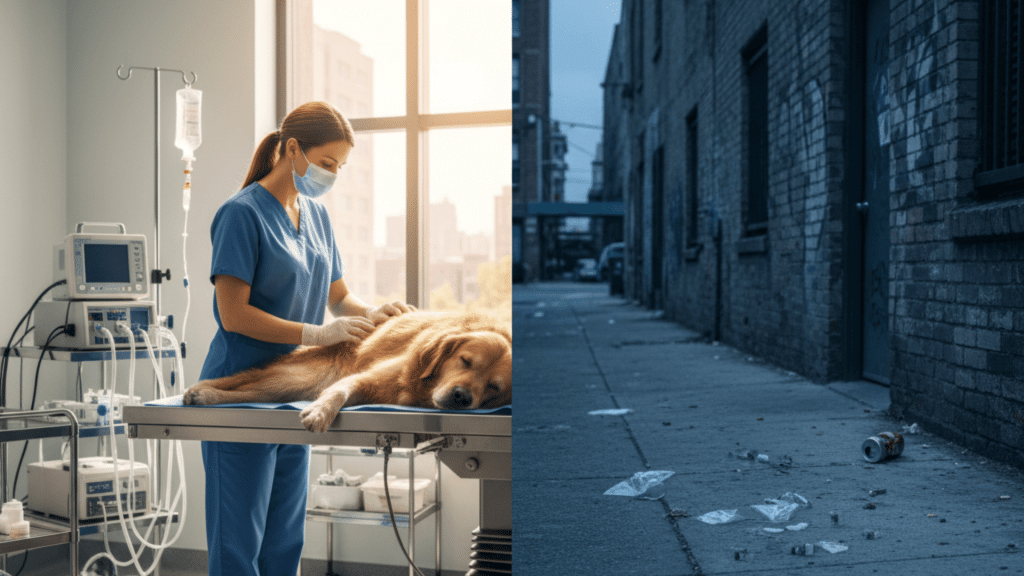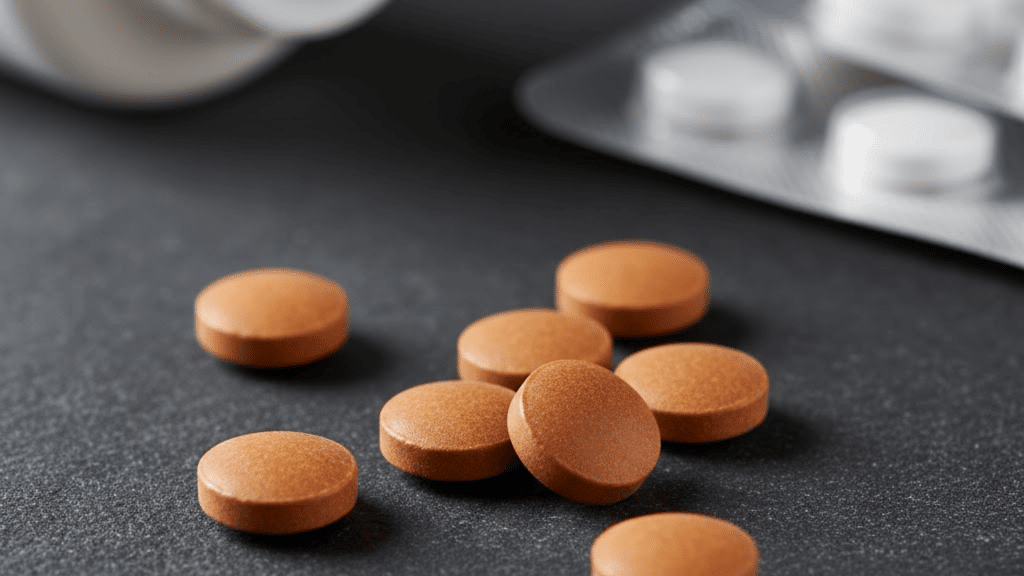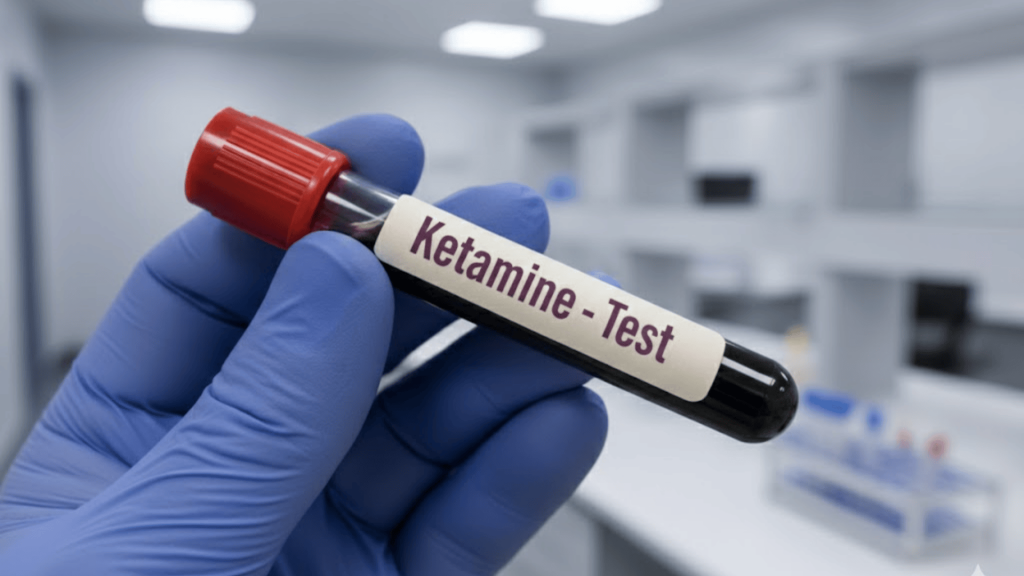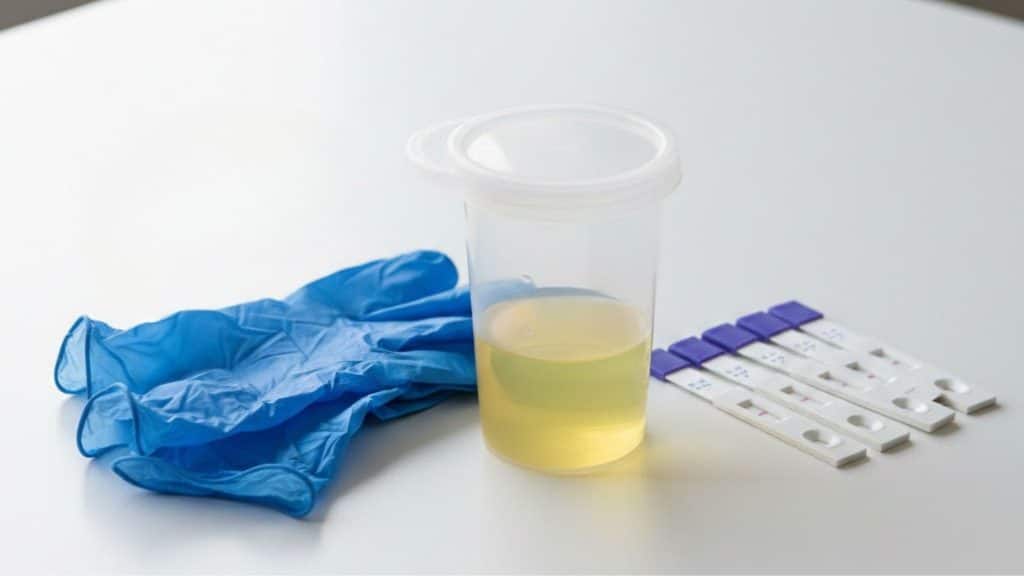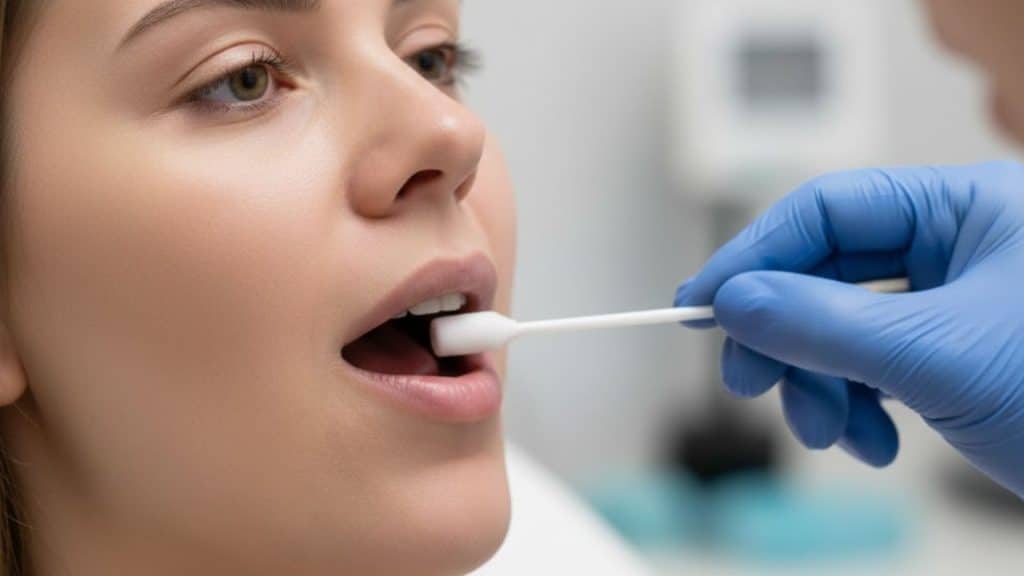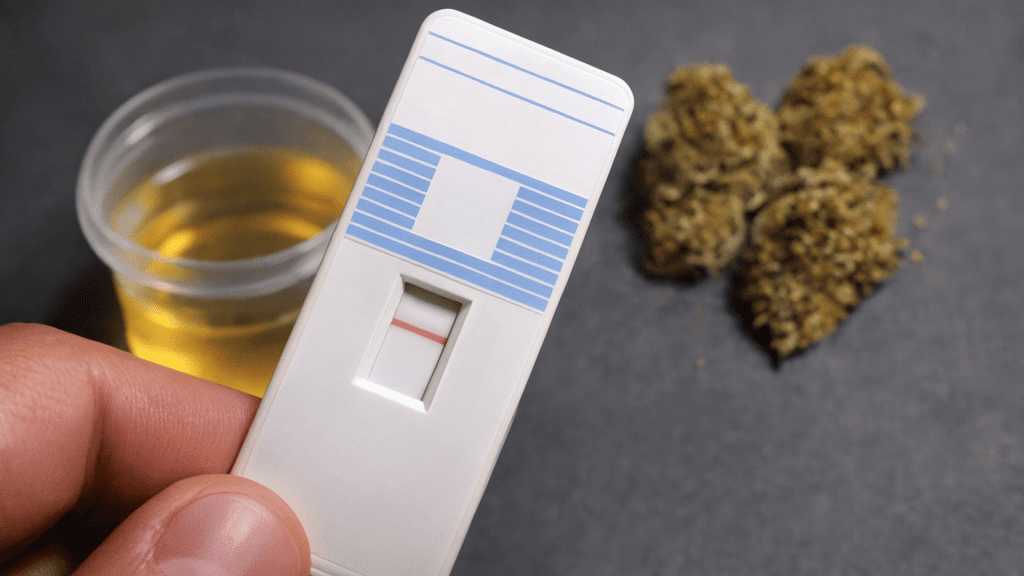The headlines keep getting darker: “zombie drug” sweeping through communities, leaving devastation in its wake.
When I first heard this term, I’ll admit it sounded like sensationalized fear-mongering. But as I dug deeper into what’s actually happening on our streets, I realized the reality is both more complex and more urgent than any catchy nickname suggests.
I’m talking about xylazine: a veterinary sedative that’s increasingly showing up in street opioids, often without users knowing it’s there.
In this post, I want to walk you through what xylazine actually is, why it’s being mixed into drugs, the very real dangers it poses, and most importantly, what you can do to stay safer.
This content is purely educational and focused on harm reduction. Nothing here constitutes medical or legal advice. If you need help, please reach out to healthcare professionals or support services in your area.
What is Xylazine?
Xylazine started its life in veterinary clinics, where it’s used as a sedative, pain reliever, and muscle relaxant for animals. It was never intended for humans, and it’s still not approved for human use by any medical authority.
Yet somehow, this animal tranquilizer has found its way into our street drug supply, most commonly mixed with fentanyl and other opioids.
You might hear it called “tranq,” “tranq dope,” or the more ominous “zombie drug” on the streets.
Whatever name it goes by, the reality is the same: xylazine is showing up where it doesn’t belong, and people are encountering it without knowing what they’re taking.
Why It’s Called the “Zombie Drug”?
The nickname isn’t just media hype; it comes from what people actually see. Xylazine causes intense sedation that can leave users in a stupor, bent over, and barely responsive for hours.
That eerie, detached appearance is part of where the “zombie” label originated.
But there’s another, more disturbing reason: the severe skin wounds. Xylazine can cause open sores and tissue death that look like something out of a horror film; rotting flesh that doesn’t heal easily.
While the term grabs headlines, I worry it also dehumanizes people struggling with addiction, reducing their suffering to a scary stereotype rather than recognizing the medical crisis it truly is.
How Xylazine Acts in the Body?

Understanding what xylazine does inside your body helps explain why it’s so dangerous, especially when combined with other substances.
Let me break down the science without getting too technical.
1. The Mechanism Behind the Sedation
Xylazine works as what scientists call an alpha-2 adrenergic agonist. Essentially, it suppresses your central nervous system by reducing the release of norepinephrine, a chemical that keeps you alert and your body functioning properly.
This creates profound sedation that goes far beyond what most people expect from street drugs, shutting down normal arousal and awareness in ways that can be frightening and unpredictable.
2. What Happens to Your Body?
The physical effects are serious and immediate. Your heart rate drops, sometimes dangerously low. Blood pressure plummets, which can cause dizziness, confusion, or collapse.
Perhaps most critically, your breathing slows down; respiratory depression that can become life-threatening, especially since you might not even realize it’s happening while sedated.
These aren’t just uncomfortable side effects; they’re potentially fatal physiological changes that demand medical attention.
3. The Dangerous Multiplier Effect
Here’s where things get even more frightening: xylazine doesn’t just add to the effects of other drugs; it amplifies them.
When mixed with fentanyl or other opioids, it creates a compounding sedative effect that’s far more dangerous than either substance alone.
The drugs work together to depress your system further, making overdoses more severe, harder to reverse, and significantly more likely to be fatal.
Common Uses in the Illicit Drug Market & Mixing Trends
Xylazine didn’t accidentally wander into the drug supply; it’s there by design, added deliberately by suppliers looking to stretch their product and boost profits.
Let me show you how this veterinary sedative has become a fixture in street drugs across the country.
| Aspect | Details | Impact |
|---|---|---|
| Primary Use | Added to fentanyl, heroin, and cocaine as a cheap adulterant | Extends high duration, increases profit margins |
| Market Prevalence | Found in a significant portion of DEA-seized fentanyl; detected across most U.S. states | Rapidly spreading from a regional to a national crisis |
| User Awareness | Most users don’t know it’s present; no visual or sensory indicators | Impossible to detect without testing strips |
| Overdose Challenge | Non-opioid sedative; naloxone doesn’t reverse xylazine effects | Complicates emergency response and treatment |
| Supply Chain | Veterinary sources diverted to the illicit market | Easy access keeps contamination rates high |
Assume any street drug may contain Xylazine. Never use alone, and always have naloxone available; it won’t reverse xylazine but will counteract opioid overdose in mixed substances.
Effects, Risks & Health Harms

The dangers of xylazine extend far beyond typical drug risks. From immediate life-threatening effects to long-term tissue damage, understanding these harms is crucial for anyone who might encounter this substance.
1. Immediate Physical Effects
Xylazine hits hard and fast. Users experience extreme sedation that can progress from drowsiness to complete unconsciousness.
Your breathing slows, sometimes to dangerous levels, while your blood pressure drops significantly.
These aren’t mild discomforts; they’re life-threatening conditions that can happen quickly and without warning, leaving you vulnerable and unable to seek help.
The sedation is so profound that people often remain bent over or slumped for hours, unaware of their surroundings or dangers around them.
2. Devastating Skin Damage
Perhaps the most visible and disturbing consequence is what xylazine does to your skin.
It causes severe wounds: open sores, ulcers, and tissue death that can appear anywhere on the body, not just injection sites.
Even people who smoke or snort contaminated drugs develop these necrotic lesions. The wounds are painful, slow to heal, prone to infection, and can lead to amputations in severe cases.
These wounds don’t respond well to typical treatment and often worsen before improving, requiring specialized wound care that many users can’t access.
3. Dependence and Withdrawal
Your body can become dependent on xylazine with regular exposure.
When you stop using, withdrawal sets in, bringing intense anxiety, restlessness, and a profound sense of unease called dysphoria.
Unlike opioid withdrawal, which is well-understood and treatable, xylazine withdrawal is still being studied, leaving many people suffering without clear medical protocols for relief.
The withdrawal timeline differs from opioids, and managing both simultaneously complicates treatment for people trying to quit.
4. The Overdose Dilemma
Here’s the critical danger: naloxone won’t save you from xylazine.
When someone overdoses on a fentanyl-xylazine mix, Narcan can reverse the opioid component but does nothing for the xylazine sedation.
This creates complicated medical emergencies where standard overdose response isn’t enough, requiring more intensive intervention and leaving a narrower window for survival.
Emergency responders now face situations where someone appears to respond to naloxone initially but remains dangerously sedated from xylazine, requiring prolonged monitoring and support.
Overdose & Emergency Response
When xylazine is involved in an overdose, the situation becomes more complex and unpredictable.
Knowing what to expect and how to respond can mean the difference between life and death, even though the tools available are limited.
- Overdose Presentation Looks Severe: Extreme sedation, unresponsiveness, dangerously slow or stopped breathing, and plummeting blood pressure create immediate life-threatening emergencies.
- Naloxone has Limits, but Use It Anyway: Narcan won’t reverse xylazine’s effects, but it will counteract any opioids present; always administer it if overdose is suspected.
- Breathing Support is Critical: Without a specific antidote for xylazine, keeping the person breathing through rescue breaths or ventilation becomes the primary lifesaving intervention.
- Medical Monitoring is Essential: Cardiovascular instability requires professional monitoring; even if someone seems to improve, xylazine’s prolonged effects demand hospital observation.
- No Antidote Exists: Unlike opioid overdoses with naloxone, there’s no medication that specifically reverses xylazine, making supportive care the only option until it leaves the system.
The reality is sobering: xylazine overdoses require more intensive medical intervention and longer recovery times than opioid-only overdoses.
If you witness an overdose, call emergency services immediately; even if naloxone is administered, professional medical care remains absolutely necessary.
Treatment, Harm Reduction, & Support Strategies
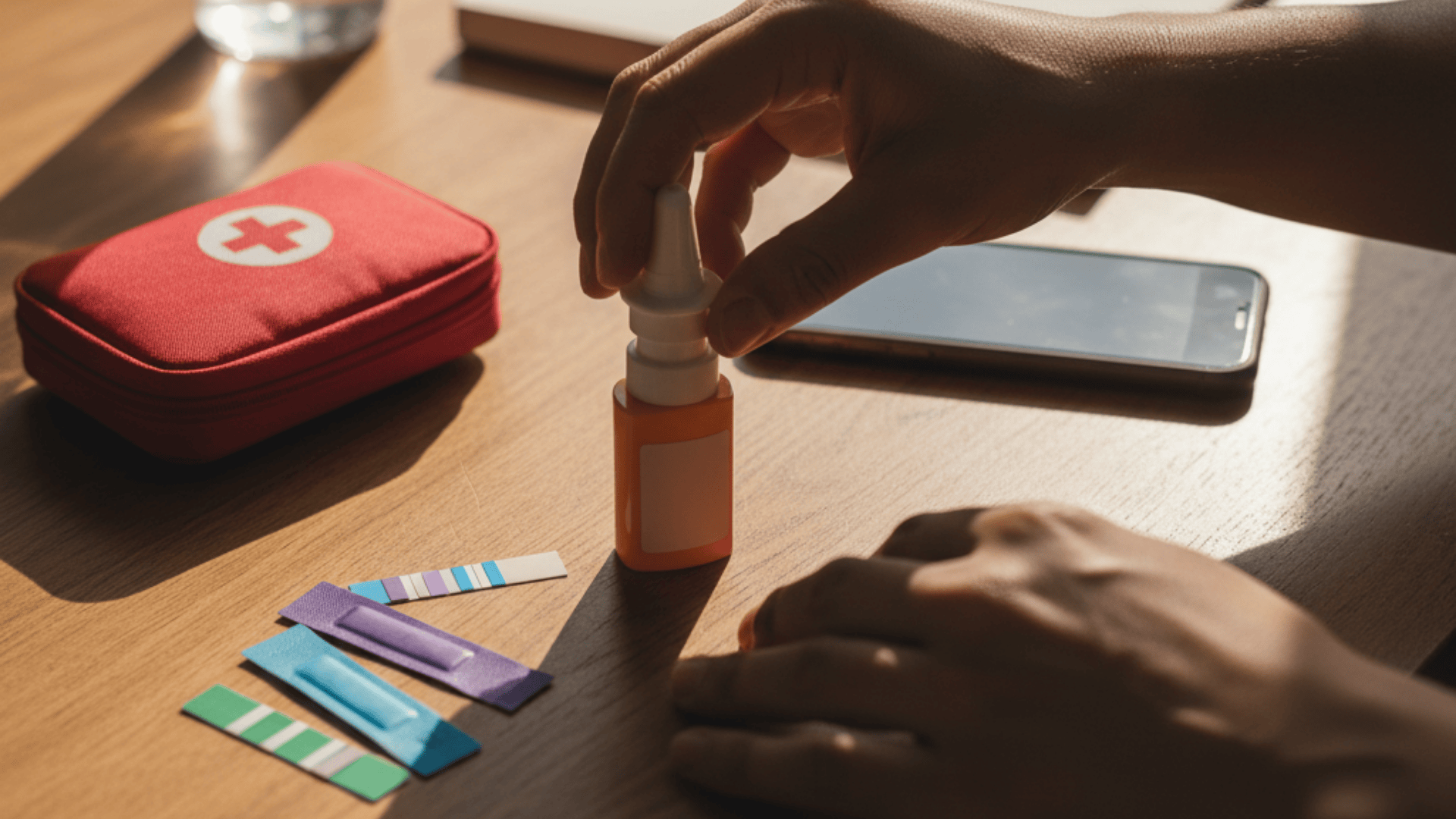
While xylazine presents serious challenges, there are concrete steps both individuals and healthcare systems can take to reduce harm and save lives.
Here’s what’s available now and what’s on the horizon.
1. Medical Treatment Approaches
- Wound Care: Necrotic lesions require specialized treatment; debridement, infection control, and ongoing monitoring to prevent amputations.
- Withdrawal Support: Medical supervision helps manage the anxiety, dysphoria, and physical symptoms during detox, though protocols are still evolving.
2. Practical Harm Reduction
- Test Your Substances: Xylazine test strips are becoming available alongside fentanyl strips—they can’t tell you how much is present, but they reveal what’s in your supply.
- Never Use Alone: Have someone with you, call a monitored consumption hotline, or use safe consumption sites where available. This single step saves countless lives.
- Stay Prepared: Keep naloxone accessible and make sure someone knows your plans. While it won’t reverse xylazine, it still counteracts opioids in the mix.
3. Future Developments
- Vaccine Research: Scientists are testing immunization approaches in animals that could one day block xylazine’s toxic effects, though human applications are years away.
- Regulatory Efforts: Governments are moving to control veterinary supplies and classify xylazine as a scheduled substance, though this may push suppliers toward even more dangerous alternatives.
The reality is that comprehensive harm reduction, combining testing, preparation, medical support, and community awareness, offers our best protection while researchers work toward longer-term solutions.
Resources & References
If you want to learn more or need help, these trusted sources provide detailed information and support.
The National Institute on Drug Abuse offers comprehensive xylazine research and risk information at nida.nih.gov, while the CDC provides overdose alerts and illicit drug supply data at cdc.gov.
The DEA publishes threat assessments on fentanyl-xylazine mixtures at dea.gov, and Addiction Center offers accessible educational content at addictioncenter.com.
For local harm reduction guidance, LA County Public Health maintains resources at publichealth.lacounty.gov, and Scripps Research shares emerging vaccine studies at scripps.edu.
For immediate crisis support, contact SAMHSA’s National Helpline at 1-800-662-4357; it’s free, confidential, and available around the clock.
Wrapping It Up
I know this information can feel overwhelming, but awareness is power. Xylazine has changed the landscape of drug use in ways we couldn’t have predicted, turning familiar risks into unpredictable dangers.
Whether you use substances yourself, know someone who does, or simply want to understand what’s happening in your community, staying informed helps us all respond with compassion instead of fear.
No one deserves to face these harms alone.
If this post helped you understand xylazine better or raised questions I didn’t cover, I’d love to hear from you in the comments below. Let’s keep this conversation going.

